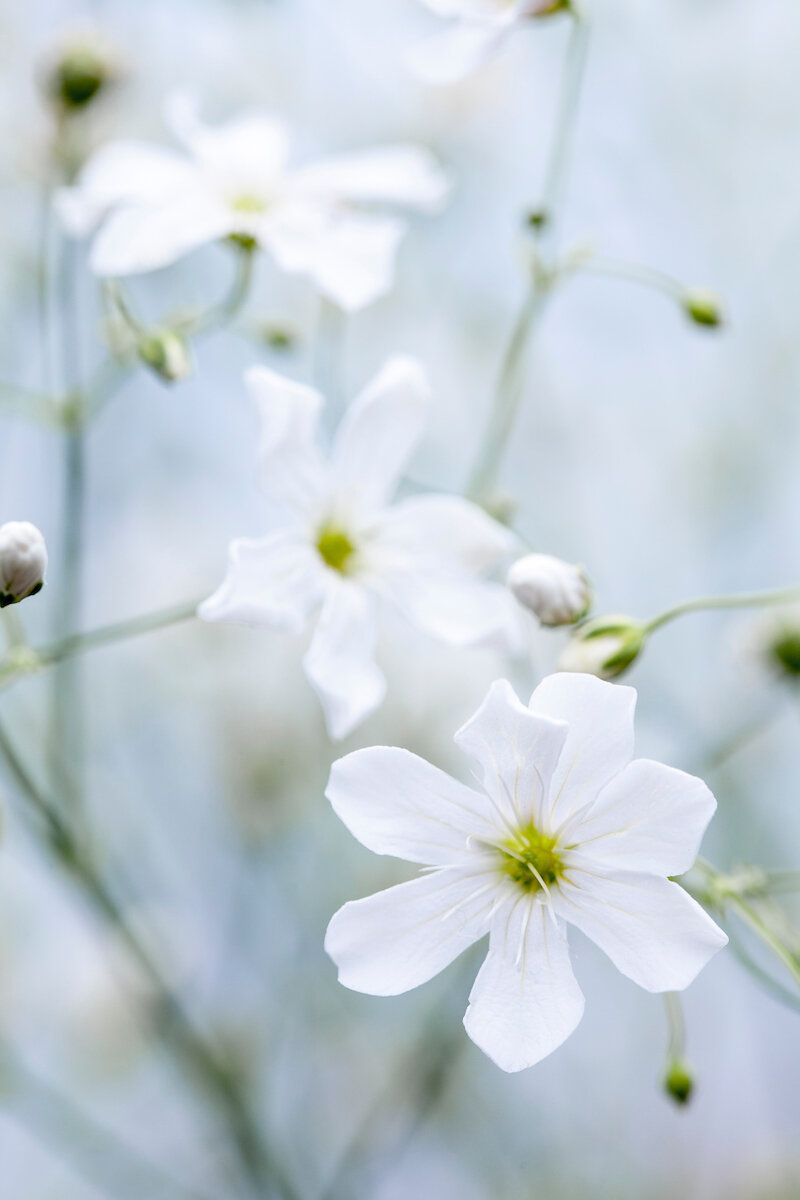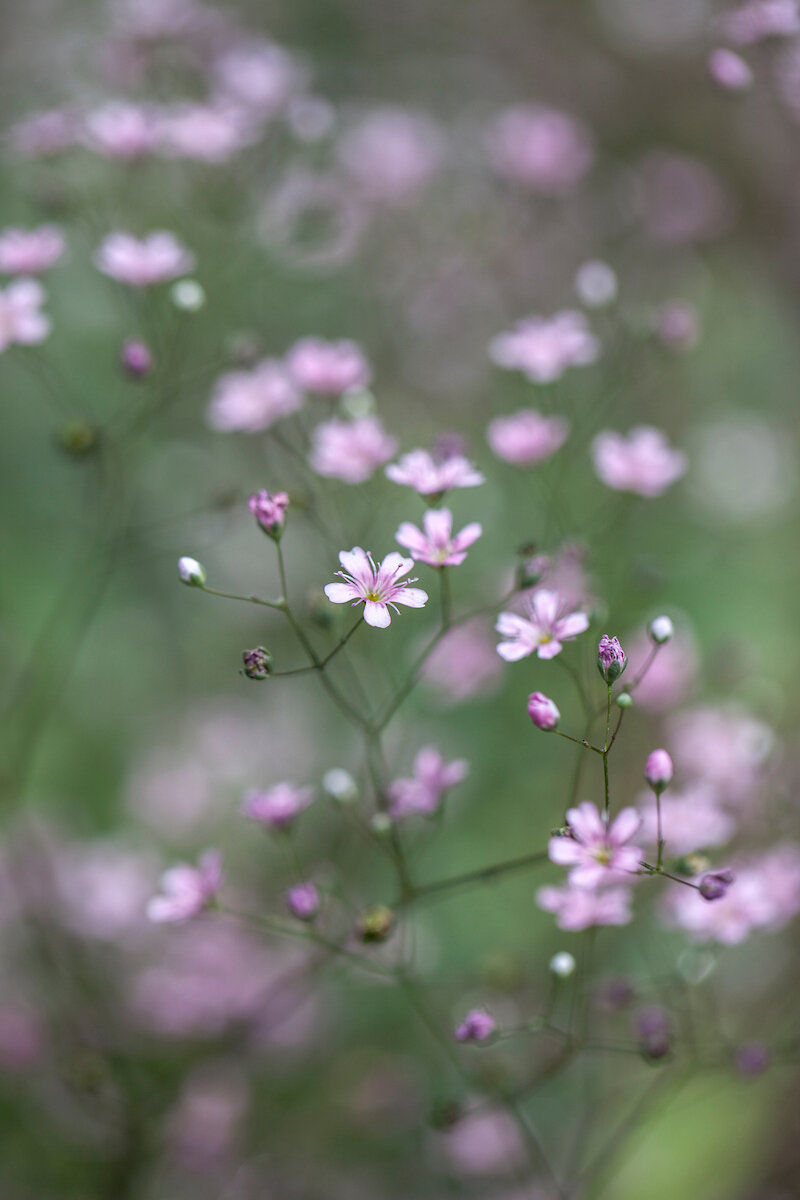Gypsophila
Photographs by Sabina Rüber
Kermesina
Covent Garden
Deep Rose
Gypsophila has become somewhat of a cliché for modern-day florists, who favour it for its airy clouds of white flowers, an easy foil for other more colourful flowers. Known as baby’s breath, it forms rounded domes in the garden in late spring or early summer, and is excellent as a filler plant in a border, its wiry stems clothed in a mist of tiny flowers.
The traditional flower-arranger’s gypsophila is the perennial form, G. paniculata, which can look lovely with other cottage garden favourites such as carnations and pinks. There are several cultivars including the double-flowered ‘Snowflake’ and the pale pink ‘Flamingo’, both of which produce dense clouds of flowers on tangled, wiry stems. However it is the annual forms, G. elegans and G. muralis that have risen in popularity recently. With tiny single flowers that don’t smother the plant so completely, they are less wedding-cake frills than traditional baby’s breath, and much more elegant as a result. Growing to about 45cm, G. elegans ‘Covent Garden’ is the cultivar most widely available. More unusual but equally desirable is the deep pink-flowered ‘Kermesina’. G. muralis 'Deep Rose' is a shorter-growing plant with low cushions of pink blooms - good for a pot.
Annual gypsophila can either be sown in spring for flowers in early summer, or in autumn for earlier flowering. It can either be sown under cover or direct in later spring once the soil has warmed up. If sowing under cover, sow the seed in a small seed tray or pot, germinating at a temperature of 18-20C. Prick out the seedlings and grow on in small pots, to be hardened off and planted out in late spring or early summer. Perennial gypsophila is best sown under cover in early spring. Both need an open sunny spot in the garden, in soil that is extremely well drained and not too rich.
Back to The Flower Garden main page. To buy a copy of The Flower Garden book click here.


